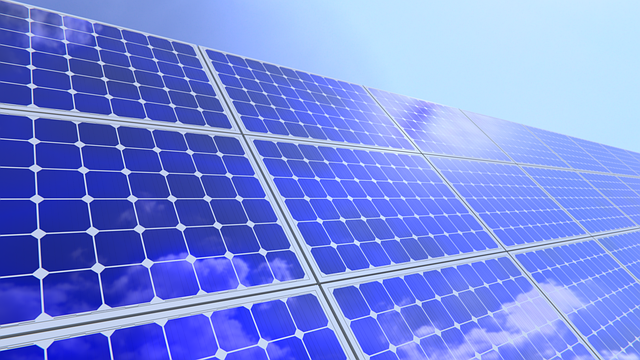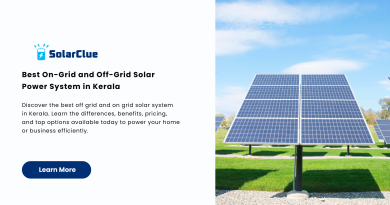Polycrystalline Solar Panels: Specialties Unveiled
Solar panels have become increasingly popular in recent years as a sustainable alternative to traditional forms of energy. Among the different types of solar panels available on the market, polycrystalline solar panels stand out for their unique characteristics and benefits. In this article, we will explore what polycrystalline solar panels are and why they are a popular choice for solar energy generation. We will delve into their manufacturing process, energy efficiency, durability, and cost-effectiveness. By the end of this blog, it will become clear why polycrystalline solar panels are a practical and promising investment for green energy enthusiasts.
Table of Contents
Understanding Polycrystalline Solar Panels
Polycrystalline solar panels, also known as multi-crystalline panels, are a common type of solar panel used in residential and commercial settings. They are made up of multiple silicon crystal fragments, unlike monocrystalline panels that consist of a single, pure silicon crystal. This manufacturing distinction gives polycrystalline panels a unique appearance that resembles a mosaic of different shades of blue.
The Manufacturing Process
The production of polycrystalline solar panels involves several steps. It begins with the processing of raw silicon, which is extracted from silica, a plentiful and widely available resource. The silicon is then melted and shaped into ingots, which are further cut into thin wafers. Unlike monocrystalline panels, polycrystalline panels have a lower silicon purity requirement, making them more cost-effective.
Next, the wafers are treated with an anti-reflective coating to minimize energy loss due to sunlight reflection. They are then interconnected using conductive material and placed between two layers of glass or encapsulant to protect the solar cells from environmental factors. The completed unit is encapsulated in a frame that provides rigidity and facilitates installation.
Energy Efficiency
Polycrystalline solar panels boast impressive energy conversion rates. While they have historically been slightly less efficient than monocrystalline panels, advancements in technology have significantly narrowed the gap. Modern polycrystalline panels can achieve energy conversion efficiency levels of up to 20%, ensuring effective electricity generation from sunlight.
The blue appearance of polycrystalline panels is a result of the silicon fragments’ arrangement, which leads to a higher reflectance of shorter wavelengths, primarily blue light. While this may seem like a disadvantage, it is worth noting that blue light comprises only a small portion of the solar spectrum. Therefore, the impact on overall energy conversion efficiency is minimal.
Durability
Polycrystalline solar panels are renowned for their robustness and durability. They are constructed using silicon that undergoes a solidification process, creating boundaries between the crystal fragments. These boundaries act as “grain boundaries” that prevent cracks from propagating, ensuring the structural integrity of the panel.
Furthermore, the materials used in the production of polycrystalline panels are highly resistant to harsh weather conditions, such as extreme temperatures, humidity, and high winds. This durability makes them suitable for various climates, making them an ideal choice for homeowners and businesses across the globe.
Cost-Effectiveness
One of the key advantages of polycrystalline solar panels is their cost-effectiveness. The manufacturing process for polycrystalline panels is simpler and less time-consuming, resulting in lower production costs. The abundance of silicon, combined with the reduced purity requirement, further contributes to their affordability.
Additionally, the improved energy efficiency of modern polycrystalline panels makes them a financially viable option for solar power installations. The higher energy conversion rates ensure that users can generate more electricity from the same surface area, maximizing their return on investment over time.
Conclusion
Discover the cost-effective power of polycrystalline solar panels with SolarClue® as we unveil their specialties. Recognized for their affordability, these panels strike a balance between efficiency and cost-effectiveness, making them popular for solar installations. With an efficiency range of 15% to 17%, polycrystalline panels perform well in various settings and are environmentally friendly, contributing to sustainability. Resilient in high-temperature conditions, they are ideal for hot climates. SolarClue® guides homeowners in assessing suitability based on space, budget, and efficiency requirements, ensuring a tailored solar solution. Experience significant savings on electricity bills and explore available government incentives with SolarClue®. Contact us for expert consultations and embrace the power of polycrystalline solar panels.
Polycrystalline panels are recognized for their cost-effectiveness, utilizing multiple silicon crystals in their construction. Their popularity stems from a balance between efficiency and affordability.
Polycrystalline panels are made by melting and molding silicon, reducing production costs compared to monocrystalline panels, making them an economical choice for solar installations.
Typically ranging from 15% to 17% efficiency, polycrystalline panels offer satisfactory performance in various environmental conditions, making them versatile for different settings.
Polycrystalline panels contribute to sustainability by harnessing clean energy. While the manufacturing process involves energy consumption, the panels themselves produce clean power, offsetting their environmental impact.
Polycrystalline panels have a lower temperature coefficient compared to other types, making them resilient in high-temperature conditions and well-suited for hot climates.
Considerations include available space, budget constraints, and efficiency requirements. Polycrystalline panels are an excellent choice for those seeking a cost-effective solution without compromising performance.
Absolutely, SolarClue® provides expert consultations to assess individual needs, offering guidance on the suitability of polycrystalline panels based on space, budget, and efficiency considerations.
Ongoing technological advancements enhance the efficiency of polycrystalline panels, making them more competitive and improving their overall performance over time.
Yes, homeowners can experience significant savings on electricity bills by choosing polycrystalline panels, which offer a cost-effective solution for harnessing solar power.
SolarClue® assists homeowners in exploring available government incentives, rebates, and tax credits, maximizing the financial benefits of choosing polycrystalline solar panels.


